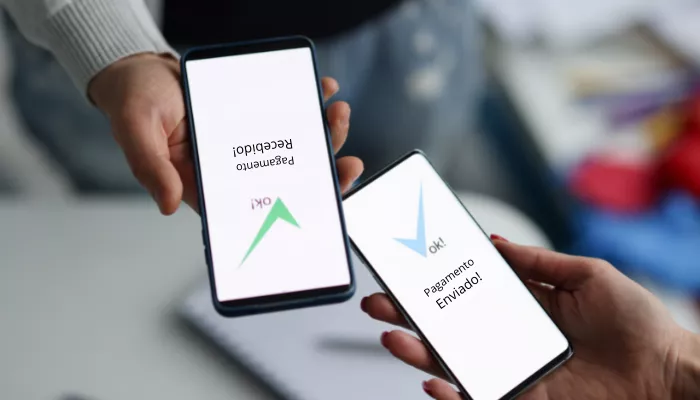
First, it is important to remember that the PIX system was created by the Central Bank of Brazil to facilitate payments. Therefore, through PIX, all accounts that use QR Codes will be interoperable. In this way, transfers and payments from one electronic account to another can be allowed in real time at any day and time. So understand better what this Pix technology is and how it works.
Therefore, instant payments allow transactions at any time, place and time for different banks within Brazil. Furthermore, you will not need intermediaries for this. In other words, card schemes, acquirers and issuers will be indispensable. And for those who don't know, digital wallets are companies that currently store credit card information to facilitate the checkout process.
Furthermore, one of the biggest differences is that through these instant payments, interoperability between any and all digital accounts will be possible. In other words, a user of an electronic account will be able to transfer to another without incurring costs regardless of the bank, in addition to being instantaneous.

Furthermore, with instant payments it is possible to see several facilities for the current Brazilian market. Furthermore, the costs will be much lower and there will be no need for other entities to participate in the transaction.
Therefore, as the transaction takes place in real time, it is essential to use alternative payment methods, such as bank slips. In this way, interoperability is allowed for all accounts and players that use QR Code as a payment method. Also, it does not require the final recipient to be a user with a bank account.
Furthermore, according to the Central Bank of Brazil, the Brazilian population is becoming more mobile-centric every day. In other words, it means that e-commerce continues to give way to m-commerce. Furthermore, in the future, payments sectors will have to be prepared. This is because customers expect a more simplified checkout process than years ago.
In addition to the various advantages included in this process, one of them is opting for Instant Payments. This includes the inclusion of the population without access to a bank account in the Brazilian financial system. Furthermore, in 2017, more or less 70% of the Brazilian population was included in this system, according to the Central Bank. As a result, around 48 million people still do not have access to debit and credit cards or bank accounts.
However, even without having bank accounts, these people generate an average of 204 billion dollars in the country's economy annually. Because, it is these people who preferably opt for the use of paper money, becoming a large population. Furthermore, when asked why they don't have a bank account, 49%'s answer is the lack of trust in banks. Also around 31% declare that they do not have enough money for this and 29% choose to prefer to use cash.
In this sense, it is clear that the Brazilian banking system has gaps in terms of payment methods. However, to this day, many people do not trust banks enough to trust all their money in one account. Furthermore, many people still believe that this way, there are absurd fees to have an account or card.
Finally, after creating this new payment method, the main advantage is to eliminate the need to periodically deal with the traditional banking system. However, Brazil's history leads many people not to trust their finances to an institution, especially older citizens.
Therefore, the aim of this new system is to bring security to the population when moving their money. In this way, we can reduce the circulation of paper money and reduce the costs that this brings.